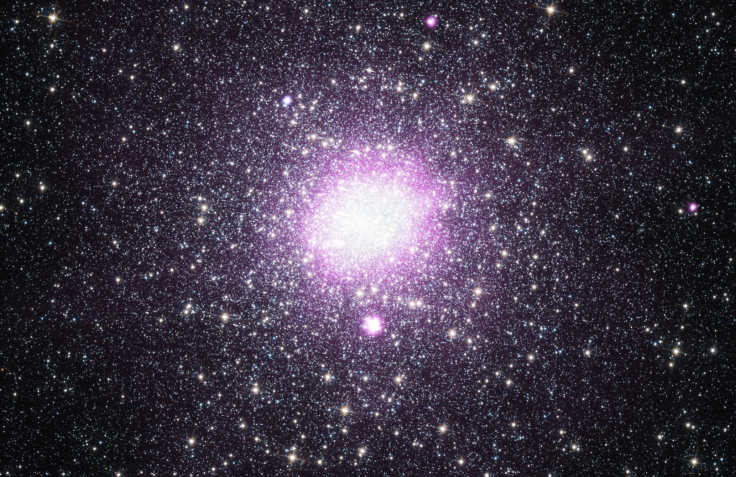Hundreds Of Black Holes Larger Than The Sun Found In NGC 6101 Star Cluster

Scientists are seeing the “un-seeable” and discovering the impossible.
A new study published Thursday shows that a globular cluster of stars that may contain hundreds of black holes has been found. That formation was previously thought to be impossible.
Globular clusters are spherical collections of stars that orbit around a center, just like the Milky way galaxy. A team of researchers at the University of Surrey in England were able to discover this new and elusive phenomenon using advanced computer simulations that mapped the globular cluster NGC 6101. The black stars at the center of the cluster, the research showed, are several times larger than the Sun and were formed when stars imploded in upon themselves, creating a massive gravitational pull that even light can’t escape from.
“Due to their nature, black holes are impossible to see with a telescope, because no photons can escape,” Miklos Peuten, the lead author of the study, said. “In order to find them we look for their gravitational effect on their surroundings. Using observations and simulations we are able to spot the distinctive clues to their whereabouts and therefore effectively 'see' the un-seeable."
Definitive evidence of black holes in globular clusters is a relatively recent discovery. Scientists were first able to observe the celestial bodies in 2013 when they noted the rare phenomenon where a companion star donates mass to a black hole, Science Daily reported. The discoveries have challenged the understanding of how exactly black holes form.
“Our work is intended to help answer fundamental questions related to dynamics of stars and black holes, and the recently observed gravitational waves. These are emitted when two black holes merge, and if our interpretation is right, the cores of some globular clusters may be where black hole mergers take place,” Mark Gieles, a co-author of the study, said.
© Copyright IBTimes 2024. All rights reserved.






















